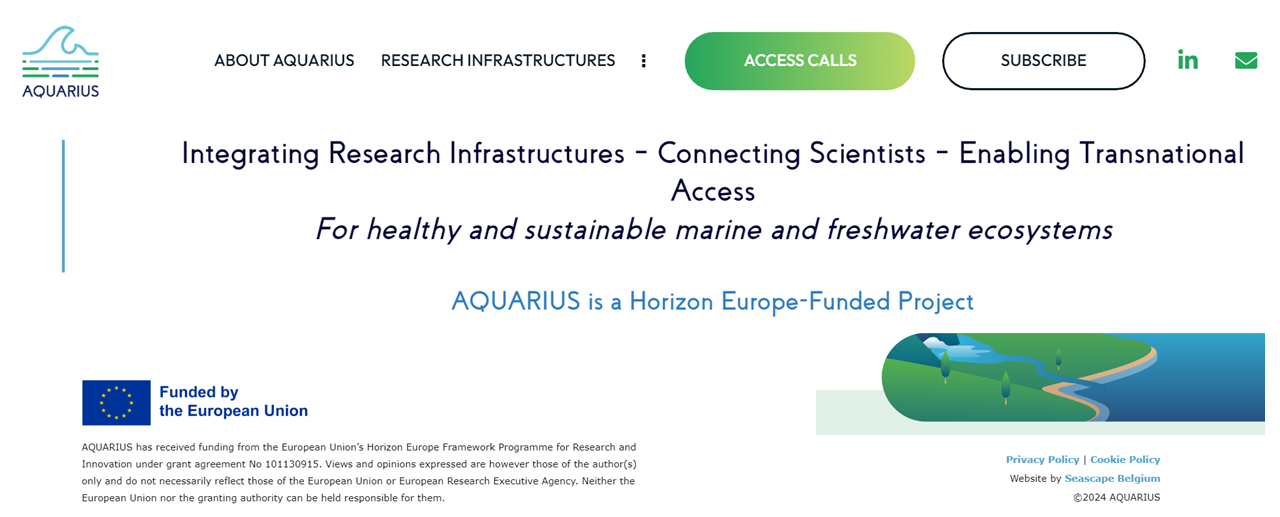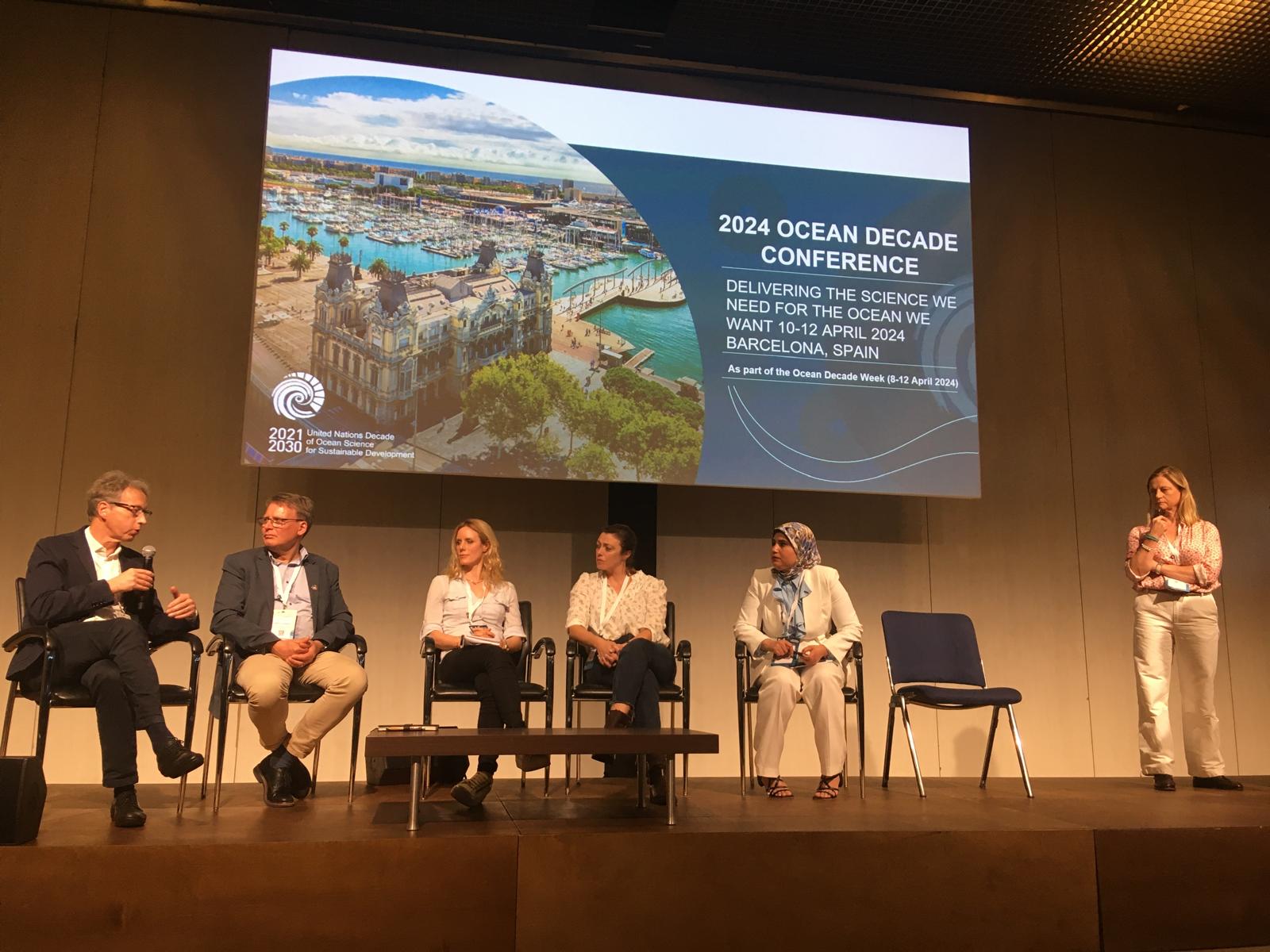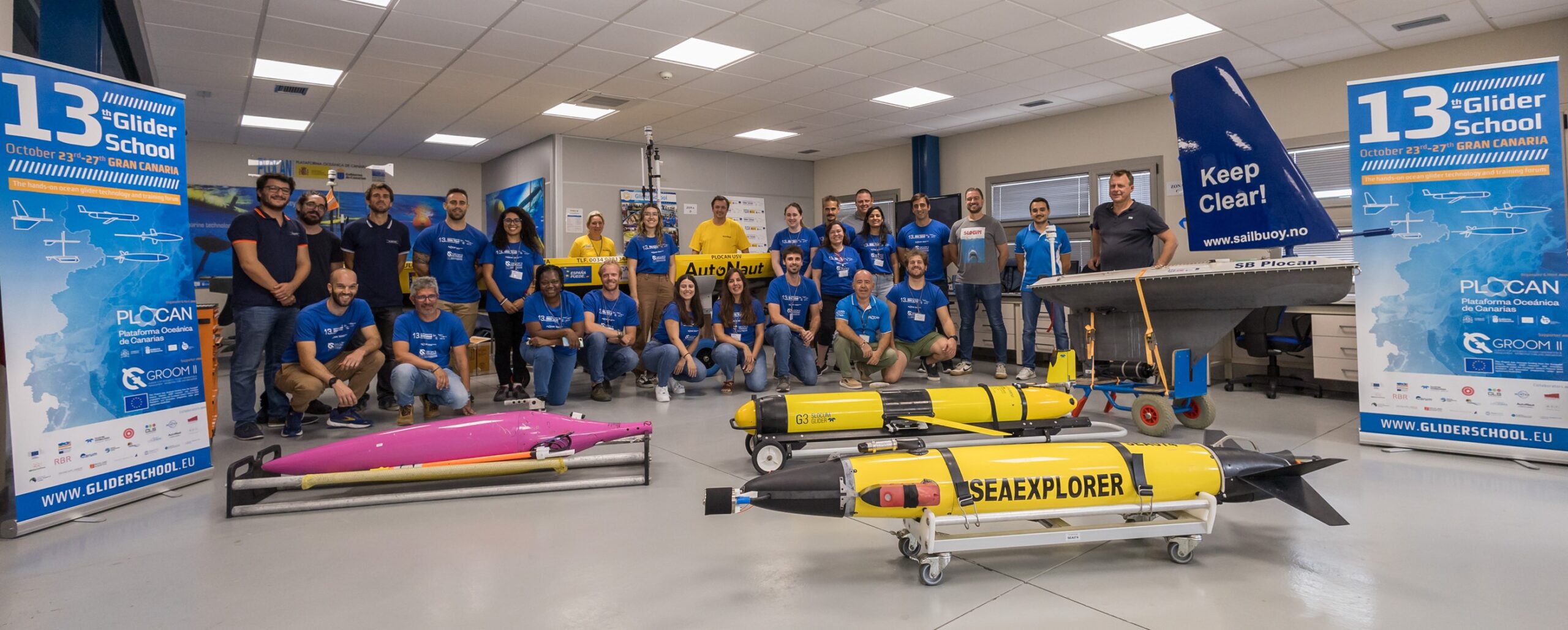The Integrated Marine Technology Service (SITMA) of the University of Las Palmas de Gran Canaria and the Area of Autonomous Marine Vehicles of the Oceanic Platform of the Canary Islands have put into operation a Slocum G2 glider in order to develop a mission in the waters of the north of Gran Canaria for scientific-technical purposes.
During three weeks, the glider will make a round trip navigation to the European Station for Time-Series in the Ocean (ESTOC) in the Canary Islands and Deep Node of PLOCAN’s Integrated Observatory, located one hundred kilometers north of Gran Canaria, undertaking dives every three hours at a depth of 1000 meters to collect continuous data on essential parameters of seawater such as temperature, conductivity, dissolved oxygen, pigments, turbidity and underwater noise, facilitated by a set of sensors included in the glider, which belongs to the SITMA-ULPGC fleet.
ESTOC began monitoring the ocean in the early 1990s together with other similar observing stations that were distributed throughout the different oceans of the planet. The enormous interest for the implementation of these observation programs was in obtaining sufficient data to help assess the possible impact of human activities on the Earth’s natural cycles.
The mission focuses its main objectives on contributing to the continuity of the ESTOC time series and the RAPROCAN program managed by the Spanish Institute of Oceanography, increasing the presence in the ocean with the routine operation and use of autonomous technologies such as underwater gliders, more efficient and sustainable for this type of observation than more traditional methodologies such as oceanographic vessels.
PLOCAN, gliderport infrastructure, member of reference European initiatives and working groups such as EGO, EuroGOOS, OceanGliders, GROOM II, OceanSites, EMSO, etc., contributes with this type of activity to the implementation of international platform operation protocols and standards autonomous ocean monitoring, as well as to the management and dissemination of the data generated. An example of this is the contribution to the European strategy for the management and standardization of oceanographic data through direct cooperation with the Coriolis and EMODNet initiatives, which makes it possible to have real-time data collected by the glider in each of the dives, with quality control and standardized format.
The objective of this mission developed by SITMA and PLOCAN is to lay the foundations for a future and fruitful institutional collaboration within the framework of ocean observation in the Canary Islands, promoting the efficient and sustainable use of the most cutting-edge technologies.




